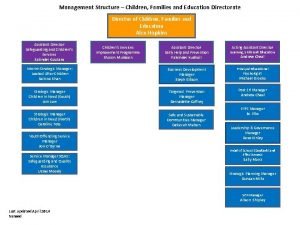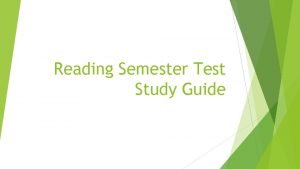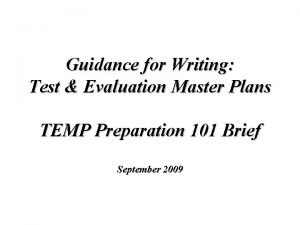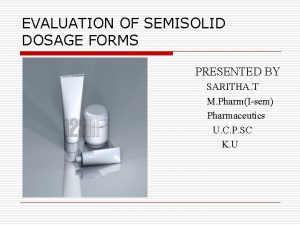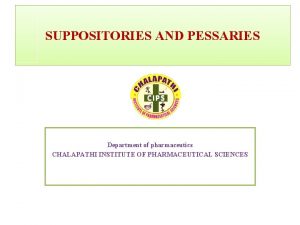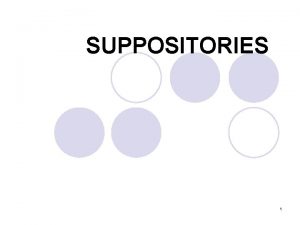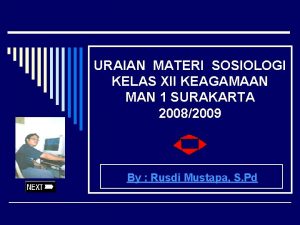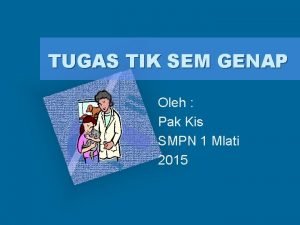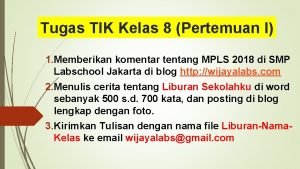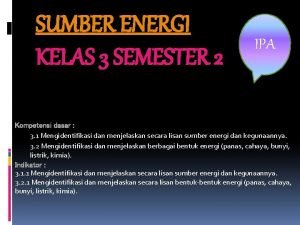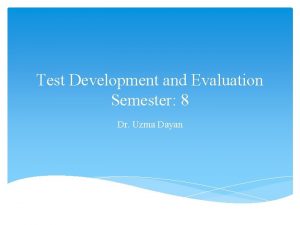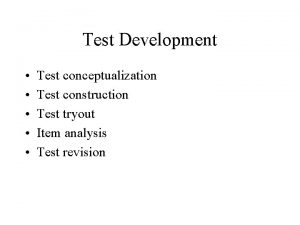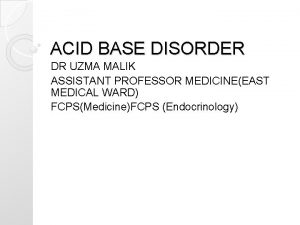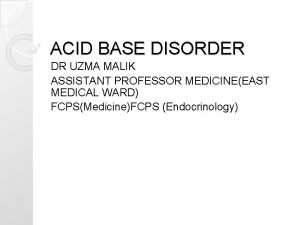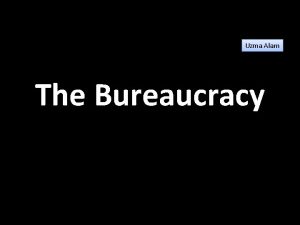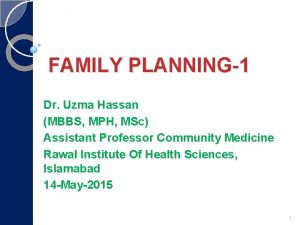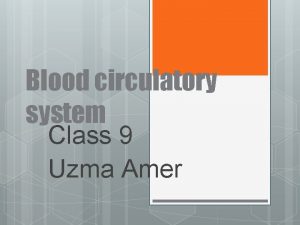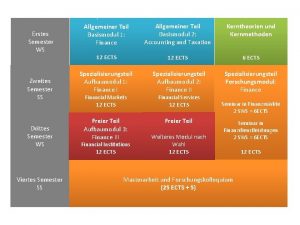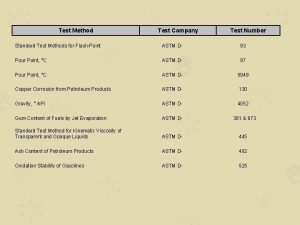Test Development and Evaluation Semester 8 Dr Uzma





















- Slides: 21

Test Development and Evaluation Semester: 8 Dr. Uzma Dayan

Topic: Criterion-referenced and Normreferenced tests

Lesson objectives By the end of the lesson, students will be able to: Ø Differentiate between Criterion-referenced tests (CRT) and Norm- referenced tests (NRT). Ø State uses of CRT and NRT. Ø Describe ways of interpreting CRT and NRT.

Criterion–referenced test (CRT) • A criterion-referenced test is designed to measure a student's academic performance against some standard or criteria. • This standard or criteria is predetermined before students begin the test. • Schools or districts choose a standard, such as a percent of items answered correctly or a state test benchmark, as the criteria for the test. The student's score then shows the progress they have made toward the agreed-upon standard-

Example 1 When you take your temperature, the accepted healthy standard is 98. 6 degrees Fahrenheit. If your temperature is higher, you are not meeting the standard for health and are likely ill.

Example 2 GRE Score required: 50 A candidate scores 49 which might be the highest among all candidate. Still the candidate is not attaining the criterion.

Criterion-referenced tests (CRT)

Uses What are these tests used for in schools? • Schools use criterion-referenced tests to assess the specific knowledge and skills students have most likely learned in order to assess how close a student is to mastering a specific standard. • We say “most likely” because there is no absolutely perfect way to measure things we cannot directly see without some error.

Importance Why are criterion-referenced tests important? • We want to know what students have already learned and what we can do to help them achieve proficiency or meet the desired learning standard. For example, performance on state assessments is often of critical importance for districts. Criterionreferenced tests will show you where students are in relation to state test benchmarks (or other agreed-upon standards) at any given time, letting you structure instruction and intervention for students who need it.

Norm-referenced test (NRT) • Norm-referenced refers to standardized tests that are designed to compare and rank test takers in relation to one another. Normreferenced tests report whether test takers performed better or worse than a hypothetical average student, which is determined by comparing scores against the performance results of a statistically selected group of test takers, typically of the same age or grade level, who have already taken the exam.

continue • Norm could be a student, a class, a school or a district. For example, a student with the highest score in a test becomes norm for the rest of the class because the score of other students are compared with his/her score.

continue • Calculating norm-referenced scores is called the “norming process, ” and the comparison group is known as the “norming group. ” Norming groups typically comprise only a small subset of previous test takers, not all or even most previous test takers. Test developers use a variety of statistical methods to select norming groups, interpret raw scores, and determine performance levels.

continue • Norm-referenced tests often use a multiple-choice format, though some include open-ended, shortanswer questions. They are usually based on some form of national standards, not locally determined standards or curricula. IQ tests are among the most well-known norm-referenced tests, as are developmental-screening tests, which are used to identify learning disabilities in young children or determine eligibility for special-education services.

Purpose • N. R. T’s are used for grouping purpose.

Example Ø SAT (Scholastic Aptitude Test); Ø IQ tests; Ø and tests that are graded on a curve. Anytime a test offers a percentile rank, it is a normreferenced test.

continue The following are a few representative examples of how norm-referenced tests and scores may be used: 1. To determine a young child’s readiness for preschool or kindergarten. These tests may be designed to measure oral-language ability, visual -motor skills, and cognitive and social development.

continue 2. To evaluate basic reading, writing, and math skills. Test results may be used for a wide variety of purposes, such as measuring academic progress, making course assignments, determining readiness for grade promotion, or identifying the need for additional academic support. 3. To identify specific learning disabilities, such as autism, dyslexia, or nonverbal learning disability, or to determine eligibility for special-education services.

continue • To make program-eligibility or collegeadmissions decisions (in these cases, normreferenced scores are generally evaluated alongside other information about a student). Scores on SAT or ACT exams are a common example.

Difference between CRT and NRT

Growth-referenced test: • In growth reference tests the learning growth of students is being observed. It is done through Pretest, post-test. For example, a test is administered in the beginning of a program to see the position of students (pre-test), then at the completion of the program (post-test) to see the progress of students. Growth- reference test is a mechanical process for the teachers. Chances of error are there such as illness of students, weather condition, country scenario etc.

Exit Ticket Task for students: 1. Give 2 examples of CRT and NRT from local context. 2. Write (in one sentence) the difference between CRT and NRT.
 Abigail marsden
Abigail marsden Dr uzma hassan
Dr uzma hassan Dinoflagellates
Dinoflagellates American literature semester 1 final
American literature semester 1 final Letnji semestar
Letnji semestar Test and evaluation master plan
Test and evaluation master plan The materials used to impart frosted look in face powder
The materials used to impart frosted look in face powder Ideal properties of semisolid dosage form
Ideal properties of semisolid dosage form How to measure standing vertical jump
How to measure standing vertical jump Hand molding suppositories
Hand molding suppositories Softening time test for suppositories
Softening time test for suppositories Materi sosiologi kelas 12 semester 1
Materi sosiologi kelas 12 semester 1 Materi desain grafis kelas 10 semester 2
Materi desain grafis kelas 10 semester 2 U.s. history semester 1 final exam
U.s. history semester 1 final exam Tugas tik kelas 9 semester 2
Tugas tik kelas 9 semester 2 Mapel tik kelas 8
Mapel tik kelas 8 Chemistry semester 2 review unit 12 thermochemistry
Chemistry semester 2 review unit 12 thermochemistry Kompetensi dasar kelas 3 semester 2
Kompetensi dasar kelas 3 semester 2 Materi ips sd kelas 6
Materi ips sd kelas 6 Wharton mbacm
Wharton mbacm English 3 semester exam
English 3 semester exam Ironydef
Ironydef
